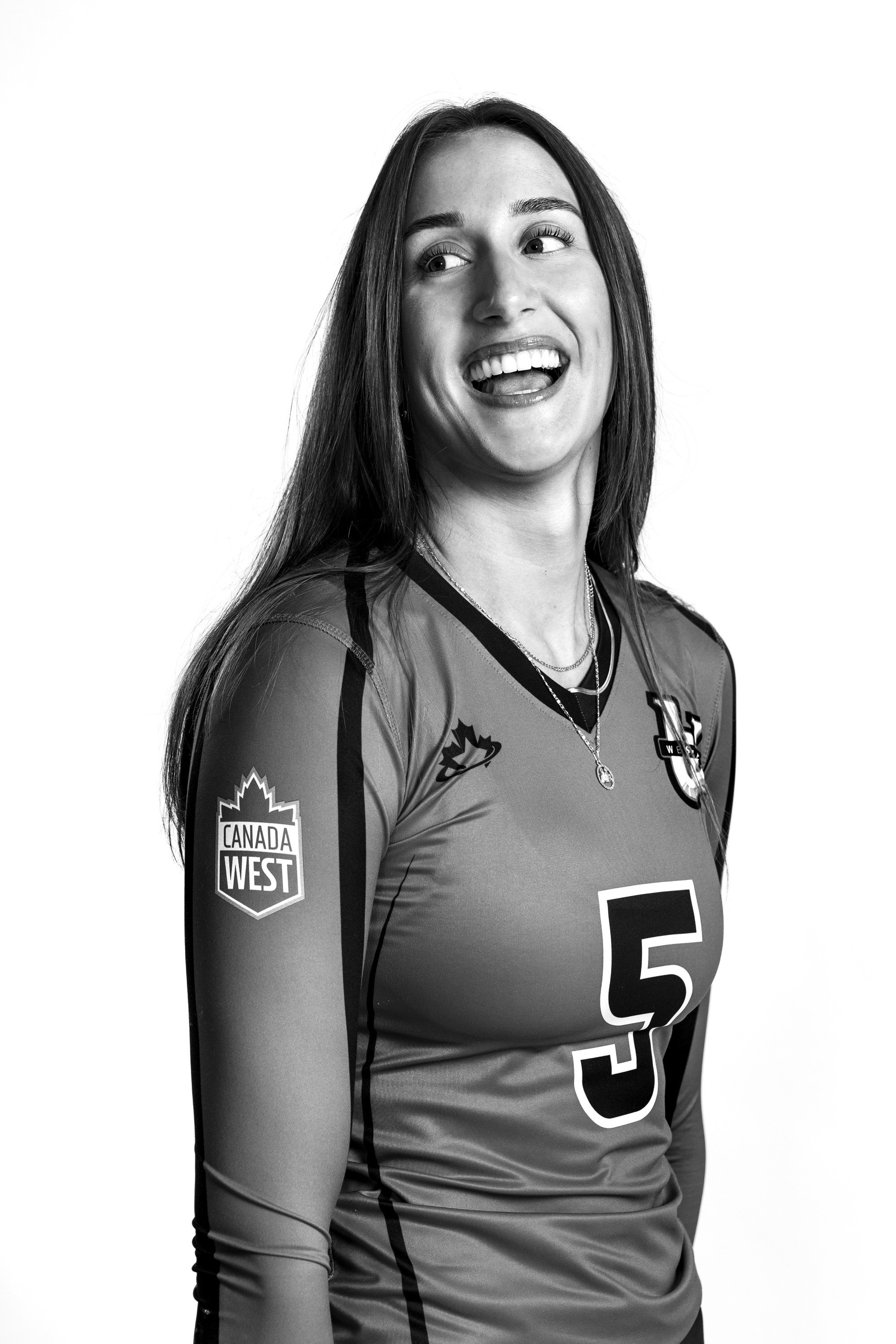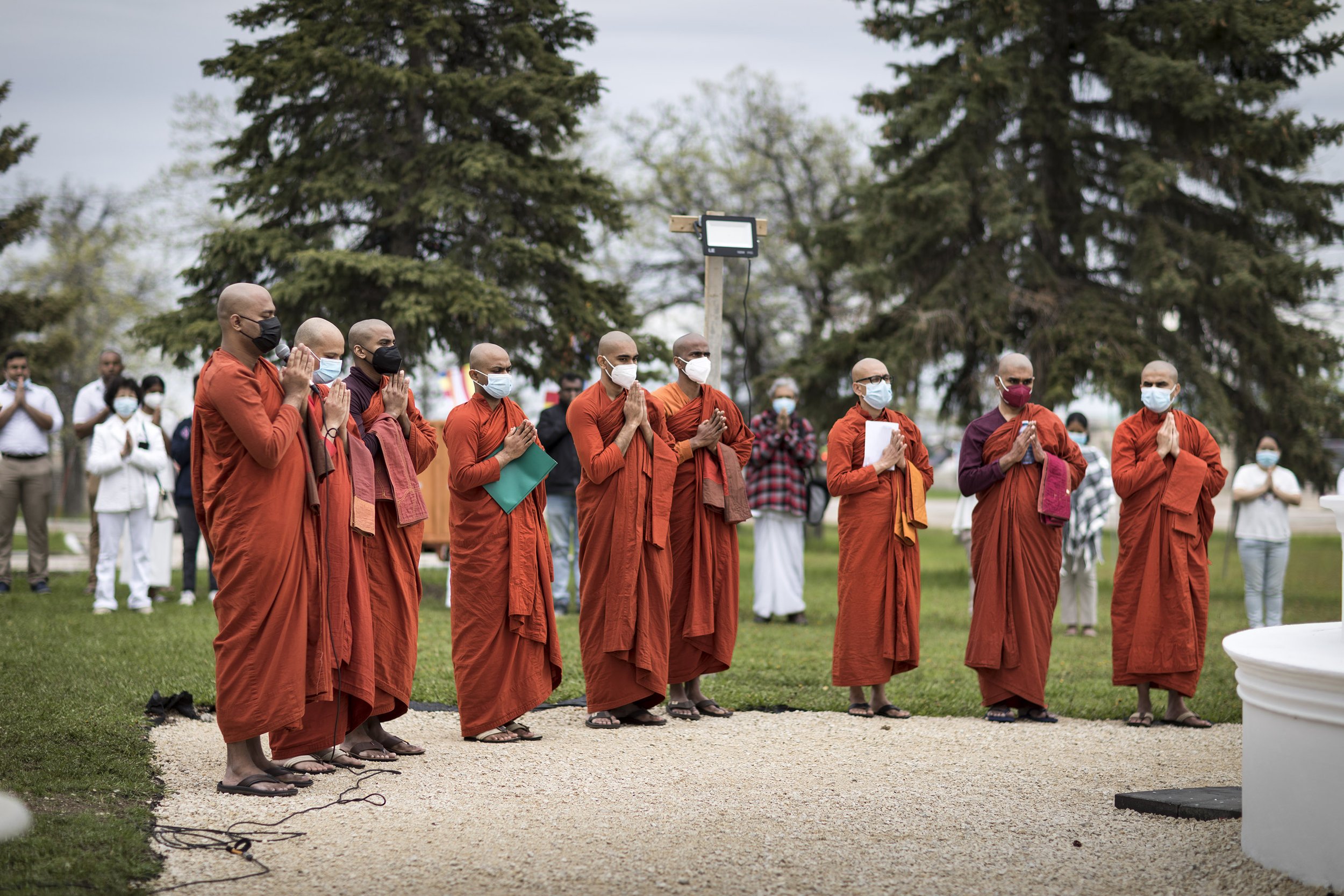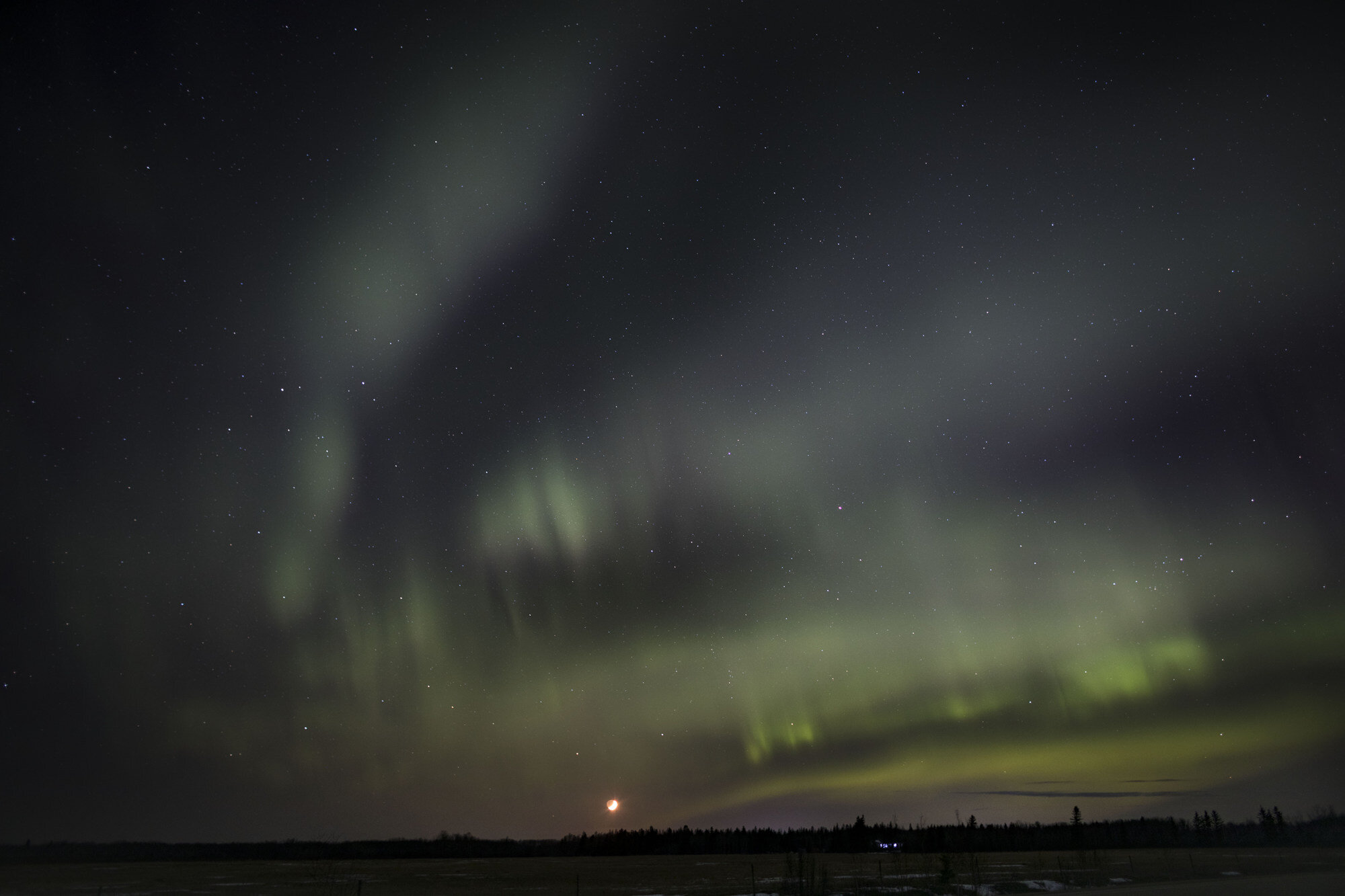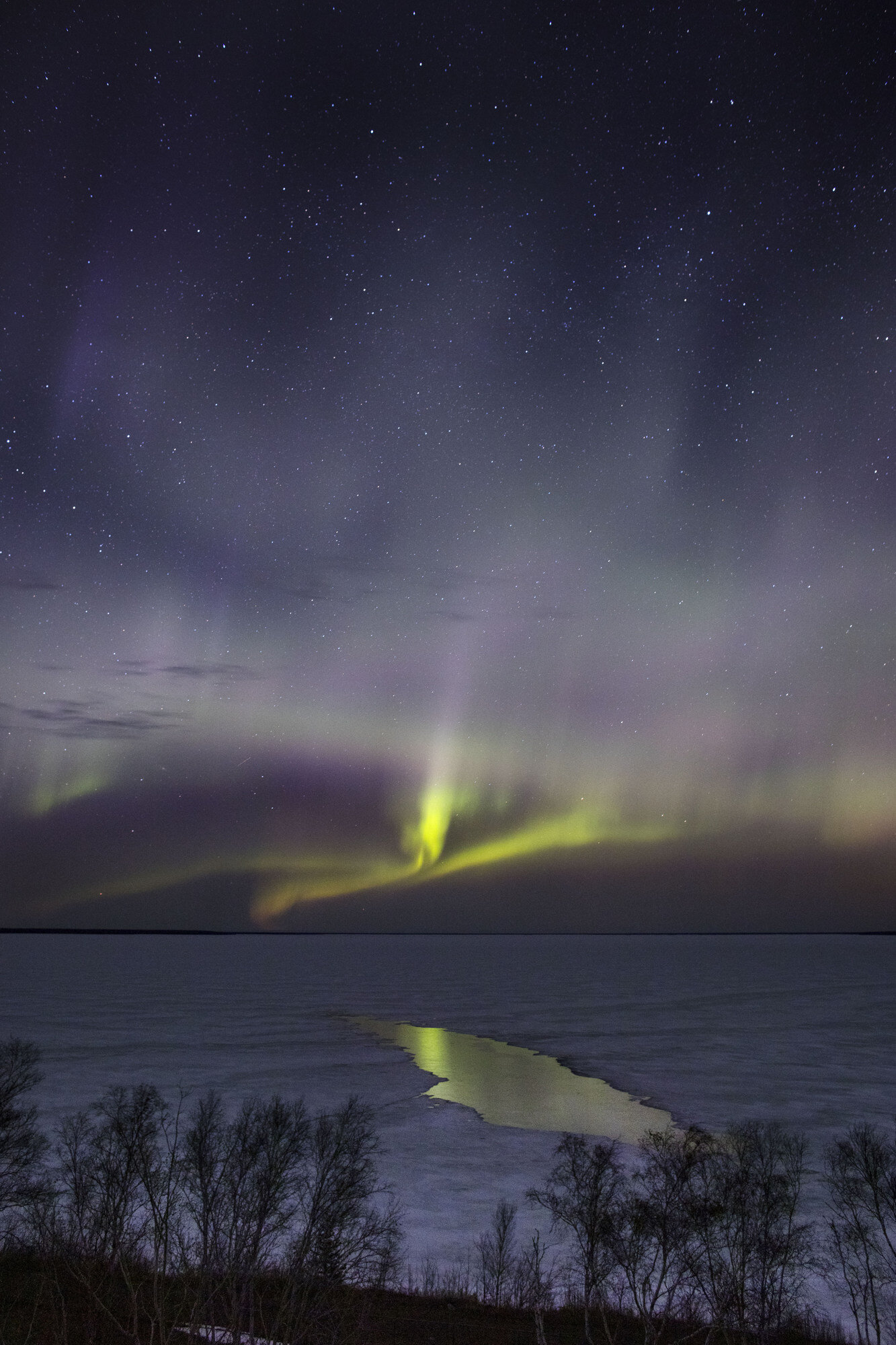One of the freelance clients I’m most happy to work with regular is the University of Winnipeg Wesmen Athletics . Apart from being a big benefit to the community and a huge part of students’ time in academia, it’s just an amazingly fun day in a location studio photgraphing dozens of individuals - each with unique personalities but all brought together by athletics.
This year was no exception. In this blog entry, here’s just a few of my favourites from the 2024-2025 Wesmen roster.
Manitoba
A Sea of Orange
Earlier this week was Orange Shirt Day which is a very visible part of Canada’s National Day for Truth and Reconciliation. In a city whose past and present is heavily comprised of First Nations people, it’s a big occasion and that was shown most visibly with a procession throughout the city’s downtown.
Organized by the Wa Say Healing Centre this year was the 4th annual march, and coincidentally the first year the day is a statutory holiday in the province of Manitoba (it’s been a federal holiday since its inception in 2020).
I’ve gone out to photograph this event every year. For me, I experience things more deeply when I engage my passion for photography and tell stories with my cameras. We all have our own ways of paying respects to a day like September 30 — this is what I feel is my best way.
A boy waves a huge flag reading Every Child Matters at Winnipeg’s famous Portage & Main intersection while awaiting the start of the 4th annual Healing Walk, September 30th.
A woman quietly sings and plays a drum as thousands of people walk by on Portage Avenue during a Healing Walk on Orange Shirt Day.
Purple and orange at Portage and Main, during the 4th annual Healing Walk on the National Day for Truth and Reconciliation in Winnipeg.
A couple greets with smiles and waves amid a sea of orange shirts at Portage & Main, with the future Metis Centre in the background.
Thunder the horse, led by Cora Morgan, attracts a shy smile from a girl walking alongside, Monday afternoon during the 4th annual Wa Say Healing Walk in downtown Winnipeg.
A small goat joins Thunder the horse on a procession on Portage Avenue, Monday afternoon. A crowd of thousands made their way from the historic Forks Market through the downtown to a powwow to mark Canada’s National Day for Truth and Reconciliation.
Memories of Summer
With the Victoria Day long weekend here, it seems a good time to share a few images I came across randomly while (trying) to organize my sheets of negatives and contact sheets from the past decade or two.
The Victoria Day weekend is sort of the unofficial start to summer and after the kind of winters we usually get in this part of the continent it’s one that means a lot to Canadians. When I was living and working in Brandon another hallmark of summer was the annual Summer Fair and especially the carnival midway.
It was a pretty terrific place to be a photographer, as you’d see a wide variety of humanity parading before you, all complete un-self conscious and not terribly concerned with a photographer. In other words, an ideal place to do street photography and (beyond that) the classic ideal of the ‘flaneur’ . I always found it a wonderful place to people-watch in a setting where a lot of the closed guardedness of daily life would fall away and people could just have fun.
The pictures shared here today were taken on medium-format film on a Hasselblad camera - not the most ideal set-up for street photography but one I’d used before in travelling to Nepal - I wanted these pictures, taken around 2014, to stand apart from the usual newspaper coverage or even street photography type of images. I set out to try photograph what it felt like to go to the carnival, in a slightly different way - a detached yet empathetic observer.
I’d love to hear your thoughts! I’ve enabled comments on this post, or head over to my account on Instagram or Foto and share there.
An Easter rebirth
This has been posted here before, but several years ago I started a project about faith rituals - I was just interested in how across all different kinds of cultures, religions, time periods and geographic areas people somehow felt the need to perform various rituals and actions as an expression of faith.
I photographed more variety than I thought possible in a mid-sized Canadian city, but the past year or so it’s been dormant.
Fittingly, in the season of Easter a rebirth of sorts occurred with 2 events connected to the Christian holiday. The festival of Salubong, a procession of religious statues held by the local Filipino community, was held on Easter Sunday morning and the 35th annual Way of the Cross procession was held by the local Catholic archdiocese on the morning of Good Friday.
Salubong was especially gratifying to photograph, as it was the first ritual I photographed in 2018 when I first conceived of this project.
From now, I hope to continue where I left off with this project and pursue other rituals in a variety of faiths. I’m as interested in the regular commonly held ritual - aspects of the everyday like a Christian baptism or candles in a Hindu puja or prayers in a Jewish or Muslim service - as I am in special events or rarer holidays.
If you have a suggestion for this project, please use the Contact form on my website to send me an email, or message me via my Instagram account if you prefer.
A congregant at St. Edwards the Confessor Catholic Church takes part in a procession early Sunday morning as part of the church’s Salubong event.
The sunrise shines over the cross marched on a procession in the 35th annual Way of the Cross Event, Friday morning at the University of Manitoba campus.
Hundreds of people walk quietly in the Way of the Cross event, on Good Friday morning, the only sound moving over the crowd a repeated prayer chant.
The cool twilight of the early Easter morning is punctuated by the warmth of a candle held by an adult chaperoning a children's choir in the city’s North End during the Salubong event.
Canada geese waddle away from a procession of hundreds quietly marching behind a wooden cross on Good Friday.
One of the stations of the cross marks a pause in the 35th annual Way of the Cross, Good Friday morning.
A children’s choir ascends the steps of St. Edwards the Confessor church on Easter Sunday morning.
Salubong event, Easter Sunday morning.
Salubong procession, Easter Sunday morning.
He Ho! Let's go (Voyageur Bop)
I’m not a fan of winter - anything you can’t drive a motorcycle in just doesn’t seem like fun to me. But the one event that can sway me (other than aurora borealis) is western Canada’s biggest winter festival, the wonderful Festivalé du Voyageur.
I had the good luck to photograph this year’s festival for online news outlet ChrisD.ca — my first time at the event since 2020. Go figure, the past few years have been eventful…
My favourite way of working - just wandering, packing just a few lenses - seems to produce my favourite kinds of photographs: small decisive moments that showcase people and light. Did I mention the light? As a festival devoted to the fur trade period of c.1815, the historical re-enactments in Fort Gibraltar have period lighting, namely lantern or window. I absolutely love it.
And you will too. I highly recommend checking out the FDV in the week it has remaining! The website linked has a full schedule.
Louis Gagne twirls a carefully groomed moustache in his role as a French Canadian fur trader at Fort Gibraltar, circa 1815.
Historical re-enactors portraying soldiers hired by Lord Selkirk fire muskets during a demonstration at Whittier Park.
Dancers with the Spirit Sands Singers await the start of a powwow, helping expand the understanding of First Nations presence during the early 19th century fur trade in Manitoba.
Participants in the international snow sculpture contest help their creation take shape near the gates of Fort Gibraltar, in Winnipeg’s Whittier Park.
The currency of the early 1800’s in western Canada - furs, on display in one of the historical re-enactment displays at Festivalé du Voyageur.
Cold air and hot tea, at a display in Fort Gibraltar.
Volunteer blacksmiths work on actual iron items exactly like those needed in everyday life at Fort Gibraltar in 1815.
Winnipeg trio Sweet Alibi performs at the 2023 Festivalé du Voyageur, joining local artists providing sounds from EDM to fiddle and jig to rock.
John Kosse lights up the first night of the 2023 Festivalé du Voyageur. Kosse was one of a group of representatives from the St. Paul Minnesota winter festival attending Winnipeg’s event.
The JD Edwards Band opens the 2023 Festivalé du Voyageur.
Friends, fire, festivalé.
A perennial festival favourite is maple taffy - just add snow and roll.
Initially an accident with leaving my camera on a different setting, I really liked the impressionist effect this had, to give a mood or feeling to this timeless scene. The irony is if I deliberately set out to make a photo like this, I probably wouldn’t do as well as this one!
A spire to faith and commitment
In Buddhist cultures, a ‘stupa’ is a focus of meditation, a structure that houses sacred objects. They’re a fairly common sight in Asia — in western Canada, not so much.
That’s why it was so gratifying to photograph the dedication of such a place this spring, as the local Sri Lankan Buddhist community came together to unveil the spire topping their very own stupa here in Winnipeg.
The ceremony marked many years of work by the ‘sangha’ -the community of monks, nuns and lay people - at the Mahamnevnawa Buddhist Meditation Centre who organized and built the structure themselves. Having also photographed the ceremony last fall when monks placed sacred objects inside the stupa, it was great to see how far the work has come to arrive at this point.
The weeks and months ahead will see finishing touches put on the site, but the structure itself now stands as a beacon of Buddhist faith, and a place for both the Sri Lankan community and the wider interested population to come to contemplate and be inspired.
This year has seen a lot of opportunities to look up and find a picture, or just a sense of wonder (usually both, for me). Whether it’s been the Aurora Borealis or meteor showers or spectacular sundogs there are so many opportunities in 2021, and I’ve probably photographed the sky more in the past 6 months than I have in the past 6 years.
Part of that is from the pandemic erasing many of the people-centred photography I was doing previously. A lot of it is freeing up more time to be able to wander and wonder and focus on the natural environment.
I’ve seen a lot of Milky Way photographs this year, and it fired up the desire to do it again myself. The one and only time I’d photographed our galaxy was a few years ago during an epic night at a dark sky preserve, in Cape St. Mary bird sanctuary in Newfoundland. This weekend, a night with a new moon (preventing any light pollution from obscuring faint stars), a clear cloudless night and no work commitments the next day meant the time was right to try again!
A quick online search for dark sky areas in Manitoba turned up Spruce Woods Provincial Park. I knew of this park for its near-desert conditions and sand dunes, but wasn’t aware of its status among sky-watchers. Despite the 2-hour drive (each way) all doubts were erased the second I got out of my car and looked up. The star-scape was absolutely breath-taking! There really is no substitute for a complete lack of light pollution — the best camera, lenses or software won’t make up for the night sky being obscured.
This really is the most vital step — finding as dark a sky as possible. This can be as simple as a quick Google search, but don’t think that a quick half-hour drive away from a city will do it — if you’re photographing infinity a few kilometres won’t change a thing. Prep yourself for a few hours drive, and keep in mind that light pollution can also come from the sun. Depending on the time of the year, ‘true’ night won’t come until well after sundown and well before sunrise. (Right about now, true night comes after midnight until about 3 a.m., with the pictures you see here being taken from 1-2 a.m.)
A wide angle lens to cover a great expanse of sky is a must, but equally important is how much light it can gather. An aperture of f/1.4 or f/2 is ideal and help prevent the need to crank up your ISO to noisy extremes.
Don’t forget the flipside to your aperture: your shutter speed. A wider aperture allows a ‘faster’ shutter speed. Anything longer than about 25 seconds will introduce ‘trailing’ to the stars, from the earth’s rotation. So, try keep your time to about 20 seconds maximum.
If you’re curious to try your hand at photographing our galaxy, a little time spent researching ahead of time will save you a lot longer time dealing with potentially serious problems in the field later. Find a dark sky area and prepare yourself for working there in total darkness! Things like bug spray, a flashlight (having a red filter or red light will help you see but not ruin your night vision) and measures to stay safe among wildlife, if applicable (for example, keeping safe among black bear populations is a common issue in Manitoba parks) will go a long way to having a positive experience.
Good luck! Look up in wonder!
The Milky Way rises in the south sky above Marsh Lake, in Manitoba’s Spruce Woods Provincial Park. Adding a foreground element can add visual interest to your composition, and a very valuable sense of perspective.
A horizontal composition - and let’s be honest, a lot of luck in timing - allowed me to include some of the many fireflies blinking in the air around me during this photo session. A long 20-second exposure recorded them as the green wavy lines to the right.
I turned my camera away from the south, where the Milky Way was, towards the east where the earthly elements made a pleasing (to my eye) composition. I liked seeing the vast fields of stars and the different mood this represented. There is almost no enhancement to the colour balance on this and all shots presented here.
This slightly-surreal scene is an example of thinking and acting quickly to the unexpected during a photo shoot. Despite the late hour (2 a.m.) the occasional car drove past on a nearby road, and I noticed that when they did, their headlights lit up a few trees along this marshy lake. When I heard another car approach far off in the distance, I knew this lighting would repeat itself — sure enough, once I set my camera to this view the trees slowly lit up with a ghostly light and my timing ensured the actual car and headlights hadn’t intruded onto the scene yet. The result was an ambiguous scene with a vague sense of mystery — a picture of a mood or a feeling more than what was actually there.
Goddesses, Dragons and Ancestors
This past month has seen a lot of different photography for me, from portraits to street to even wildlife (OK, pelicans), but I’m returning to the topic of Northern Lights because…well, because magic doesn’t happen very often.
And that’s the only way to describe looking up and seeing the sky dance with softly glowing colours, in the kind of soft comforting silence you can only get from true solitude.
The aurora borealis is a result of solar radiation interacting with the Earth’s upper atmosphere — think of what happens to a neon bulb when you run electricity through it — but standing beneath it, it’s hard to reduce it to just that. There are a lot of legends surrounding the Northern Lights — from goddesses ushering in a new day, to dragons battling for good and evil and (most poetically, to me) the First Nations of North America seeing them as echoes of departed people moving and speaking to them in the infinity of the sky.
My latest aurora encounter began after a long day working. From the numbers coming in on solar activity, and an admin on a Facebook group far more versed in crunching the data, it looked like Friday night/Saturday morning would offer very good chances for spotting the Lights. Happily, the clouds and cold of recent days had departed and it looked ideal for trying one’s luck.
With that, I set out around midnight for a 2 hour drive away from the light pollution - and unfortunately increasing crowds - of the city. Several times I stopped by the side of a highway to gaze at the lights which already had made an appearance…I knew I’d made the right decision despite being on Hour 17 without sleep.
Pulling into my destination all weariness and doubt immediately fell away, as how right my choice was dazzled the sky overhead. Far from being confined low to the horizon, these lights were far brighter and covered at least half the sky. Like I said: magic!
Our sun is currently entering into an active phase of its regular cycle, so there’s a good chance these displays will return. My humble advice, if you want to witness them for yourself: approach them reverently and with respect and take the time to let it unfold. Aurora are unpredictable - they may show up early, or not until late into the night, and they may dance for hours, or minutes.
Set aside more time than you originally planned. It’s rare that we get an opportunity to sit in silence, with no demand to ‘do’ something or justify our time. Make the most of it!
As the world turns
I’ve never tried my hand at astrophotography, but recently I learned of a traditional Thai “spirit house” in rural Manitoba. This phenomenon is commonplace almost everywhere in Thailand, a devoutly Buddhist nation with a prior history of animism and spirit worship - but understandably rare in Manitoba.
Once I saw it for myself, though, I knew almost immediately that its juxtaposition with a faraway land and culture would best be expressed by a show of the Northern Lights with it. While the aurora did not make an appearance - yet - I did have a crystal-clear sky to work with and a perfect vantage point centering on Polaris, which would offer a focal point for my image.
Adding to the excitement was the fact Manitoba is currently in the grips of a brutal cold snap, and my set-up was done in temperatures of -40 degrees Celsius. It’s nothing proper clothing and preparation can’t handle, but it definitely made working slower and more challenging. As did hearing a pack of coyotes howling in the woods surrounding the site - something the resident sled dogs responded to in kind!
I’m happy with how the shot turned out - while I would have preferred a show of the Aurora I was lucky that a ‘radial’ type display of star trails could still be had with this unique cultural marker. On the technical side, I used a free program called Star StaX and combined 60 separate photographs (looking basically like the second shot here) to make the final lead image. I’d recommend this program, it’s easy and basically self-explanatory to use, does not downsize or reduce your final image, and did I mention it’s free? The third image gives a view of the app’s homepage; be sure to select the download that corresponds to your Mac’s current operating software.
The sun-dog days of winter
The sight of sun-dogs — parhelion for the meteorologists in the crowd — is a hallmark of bitterly cold days here. Caused most commonly by ice crystals suspended in clouds or floating freely in the air, these crystals act as prisms, bending light into a spectacular display in the sky when the conditions are right.
Wikipedia was kind enough to mention that sun-dogs can exist on other planets, too:
Mars might have sun dogs formed by both water-ice and CO2-ice. On the gas giant planets—Jupiter, Saturn, Uranus, and Neptune—other crystals form clouds of ammonia, methane, and other substances that can produce halos with four or more sun dogs.[8]
My work more commonly involves portraits, street photography and people in general — that obviously is on hiatus now with the lockdowns imposed by our provincial governments in grappling with the pandemic. But that leaves an opening to pursue different subjects and different pursuits with a camera, in my case the landscapes and places around our city. As long as you’re dressed for it, there’s a lot of beauty to be seen!
The Golden Boy
It’s not unusual for it to be bitterly cold in December in Winnipeg, but Christmas Day brought a very mild evening and that is unusual. Seeing a faint moon, I took a hunch and wondered if it would rise behind the topper to our Legislative Building, the one and only Golden Boy.
Despite forgetting my glasses and gloves in my rush to beat the sunset, I managed to get a few images of the slender border between day and dusk. For those who are able, the time just after sunset is really magical right now with the light display at the Legislative Building grounds and I highly recommend it.


















































































